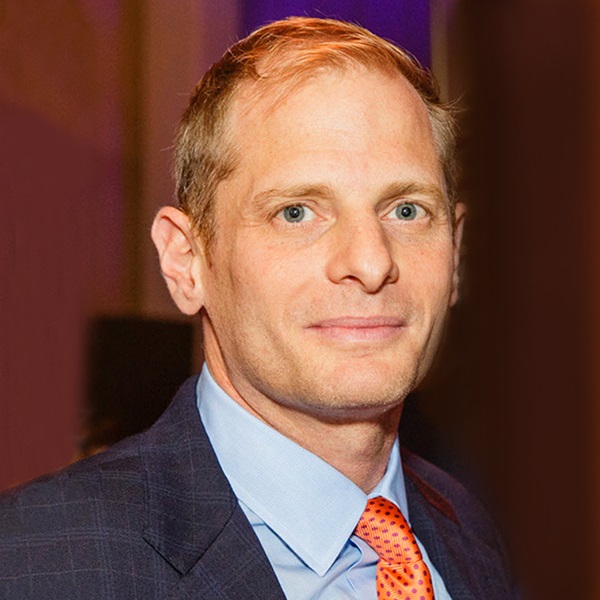Trade
Recreation & Entertainment
From deep-fried turkey to pumpkin pie, the holidays are a time to indulge. But a new category of weight loss drugs is designed to curb appetites and thereby prevent a multitude of health problems associated with obesity.

At the same time, these drugs — sold under the brand names Ozempic, Wegovy, Zepbound and others — are raising questions for the food industry and companies that rely on cravings to sell their products.
“Executives in nearly every industry are being asked about the impacts of these weight loss drugs on their businesses,” says Michael Beckwith, a Capital Group portfolio manager. While concerns are valid, “some of these conclusions are more fanciful than logical.”
Nevertheless, with estimated potential annual sales of $100 billion, this is a category of drugs that must be considered when making investment decisions, says Greg Wendt, a Capital Group portfolio manager. “I’m keeping an open mind — there are more questions than answers right now, but could this be an innovation as significant as the creation of the mobile phone? Possibly.”
Big Food vs. Big Pharma
The media frenzy around weight loss drugs reached a fever pitch when Walmart’s U.S. chief executive officer said that people on glucagon-like peptide-1 (GLP-1) weight loss drugs are buying less food compared to the general population. From there, reports surfaced that airline companies could save millions on fuel if more people lost weight. Some people have posited that GLP-1 could dampen addictive behaviors such as drug and alcohol use.
“The challenge is that it’s very hard to disprove a negative, and there’s a lot of speculation right now,” Beckwith says. Talks of GLP-1 upending the status quo reveal just how little we know about these drugs.
People who use GLP-1 drugs lose weight in part because they eat less. These drugs work in two ways, according to biotech and pharma analyst Laura Nelson Carney. First, in the pancreas, they stimulate the release of insulin, block the unhelpful release of glucagon after meals and slow gastric emptying, which together reduce food intake.
Second, and less well understood, the drugs also act centrally in several regions of the brain where GLP-1 receptors are involved in signaling for stress response, anti-inflammation, feeding behavior and reward/reinforcement. This encompasses food intake, feelings of satiety, and the sense of pleasure we get from food and maybe other things.
“This might explain why some people on these medications report they’ve become less interested in alcohol, cigarettes and other non-food vices,” explains Nelson Carney. However, while these purported benefits are widely discussed in social media and among some academic researchers, they have not been demonstrated in large randomized clinical trials.
“Big Food” is already cooking up new product ideas. Nestlé and PepsiCo executives both played down risks tied to GLP-1, with the former saying that new food products are being developed to address the “risk of malnutrition and the loss of lean muscle mass” while on these weight loss drugs.
“As more people take GLP-1, there could be a decline in overall calories in the general population, but that would require an extremely high number of people on these drugs,” Wendt says. “We just aren’t there yet.”
In the meantime, investors will be assessing how businesses such as restaurants and gaming adjust to changing consumer tastes. “There will be winners, and usually it’s the companies that are flexible and scalable that can meet the challenge.”
Industry side effects


Easier to imagine are the side effects weight loss drugs could present for the health care sector. “The drugs will likely change disease progression for diabetes and obesity and other associated co-morbidities in heart, liver and kidney disease,” says health care analyst Henry Wu.
There are decades-long studies that show people who have undergone weight loss surgeries usually experienced an improvement in their blood pressure, cholesterol levels and other conditions associated with obesity. “It’s a good indicator of what we could expect from GLP-1s in a broader patient population, particularly as the next generation includes small molecule pill forms,” Wu says. GLP-1s are also being studied for liver and kidney diseases.
This doesn’t mean the long list of obesity-associated diseases will disappear. “The devil is in the details: Who will pay for it, how long do they stay on the drug and what’s the compliance rate?” Beckwith asks. “That’s important because these drugs require a long-term commitment to produce beneficial health care outcomes.”
Nelson Carney expects that many people will cycle on and off these drugs rather than remain on them continuously over many years. Moreover, the field may evolve to include stronger drugs for the initial induction period to maximize weight loss, followed by a maintenance phase of weaker or less frequent drugs.
On the regulatory front, Wendt points to the tantalizing possibility that GLP-1 drugs could reduce annual health care spending by the U.S. government. Over the last few years, Medicare spending has been well below projections, with some research noting that older Americans have had fewer heart attacks and strokes. “People are trying to figure out if these weight loss drugs are also going to have an impact,” Wendt explains.
The ripple effect has already been felt across health care stocks, particularly medtech, with the Dow Jones U.S. Select Medical Equipment Index down 6.4% year-to-date as of November 20. “I think there are some mispriced stocks based on misunderstandings of these drugs. For example, companies that treat Type 1 diabetes appear undervalued,” Wendt adds.
Type 1 diabetes is an autoimmune disease that prevents the pancreas from making insulin — these patients are generally not prescribed GLP-1. Roughly 20 million people in the U.S. are taking GLP-1 drugs, the bulk for Type 2 diabetes and only about 1 million for obesity. The first GLP-1 drug, exenatide for diabetes, was approved in 2005. For obesity, Novo Nordisk’s Wegovy was approved in June 2021, and Eli Lilly’s Zepbound in November 2023.
From GLP-1 to GPT: A golden era of disruption
Amara’s Law goes something like this: People tend to overestimate the impact of technology in the short run and underestimate the long-term consequences. “Last year it was all about artificial intelligence and how large language models will change the world. Now, we are factoring in both the short- and long-term effects of GLP-1,” Beckwith says.
There will be more to come, and we likely haven’t scratched the surface of where disruptors such as AI or GLP-1 will take us, Wendt believes. “These are very important breakthroughs that could scramble a lot of current expectations, but it will take some time to sort out the winners and losers.”
Related Insights
Related Insights
-
Understanding tariffs in 5 charts
-
Trade
Understanding tariffs in 5 charts -
Trade
Decoding tariffs: What’s the economic impact?

 Michael Beckwith
Michael Beckwith
 Greg Wendt
Greg Wendt
 Laura Nelson Carney
Laura Nelson Carney